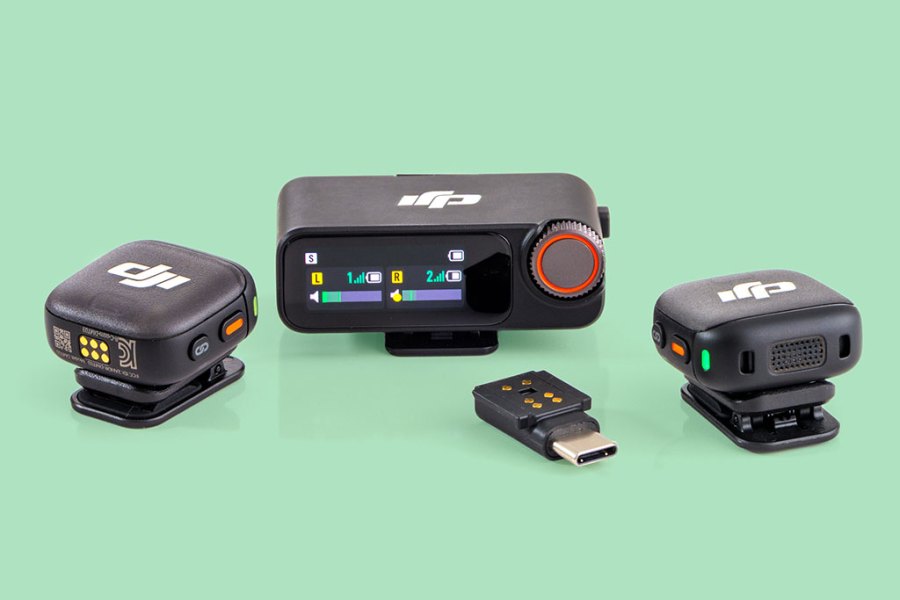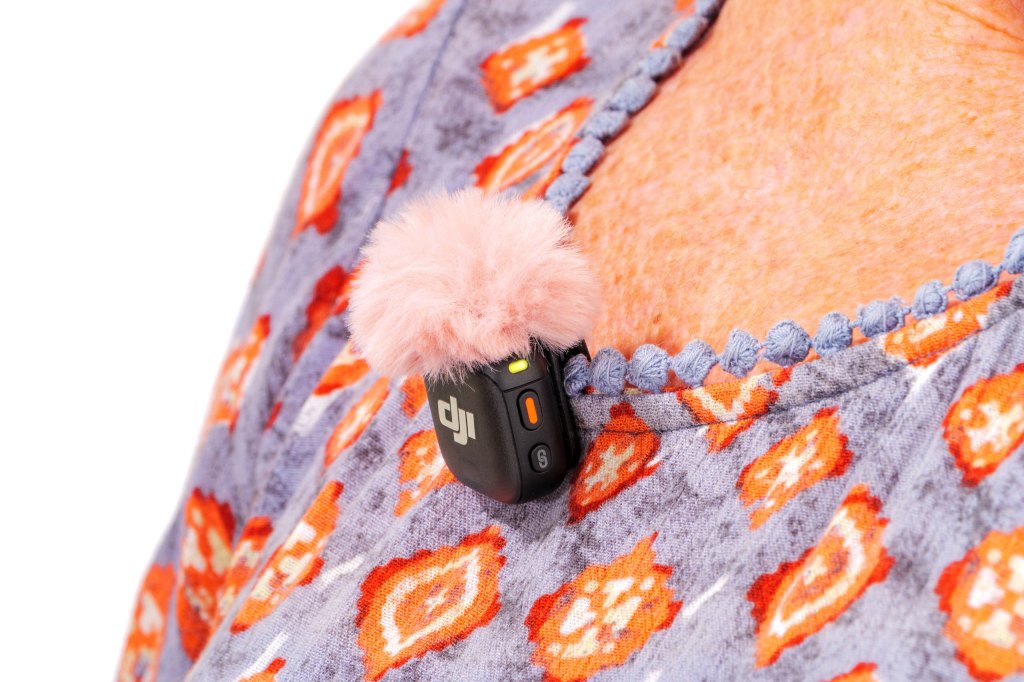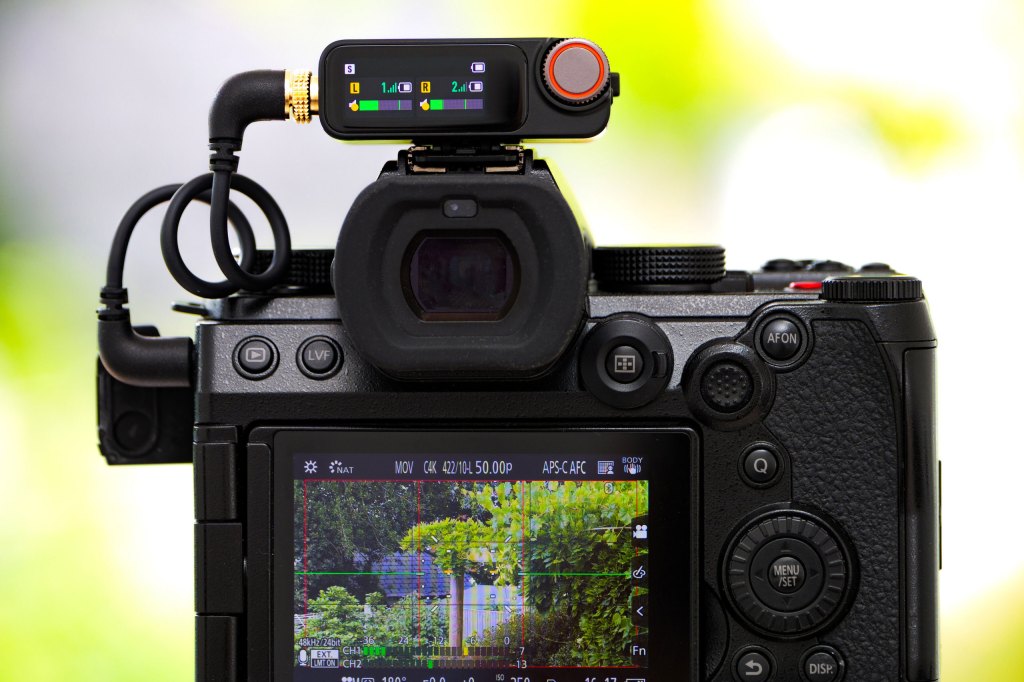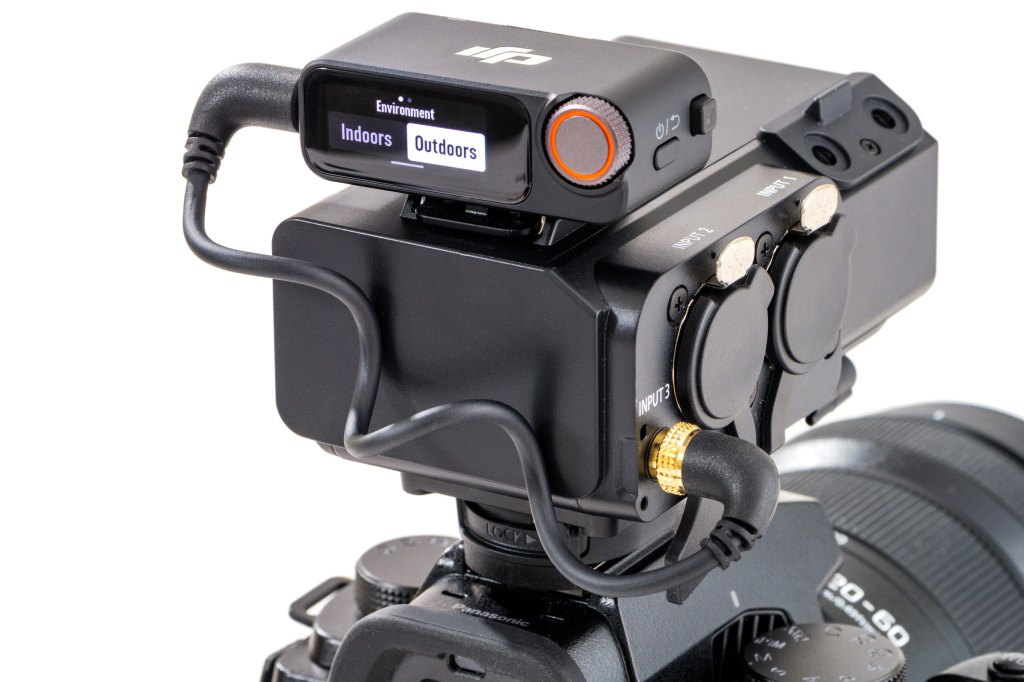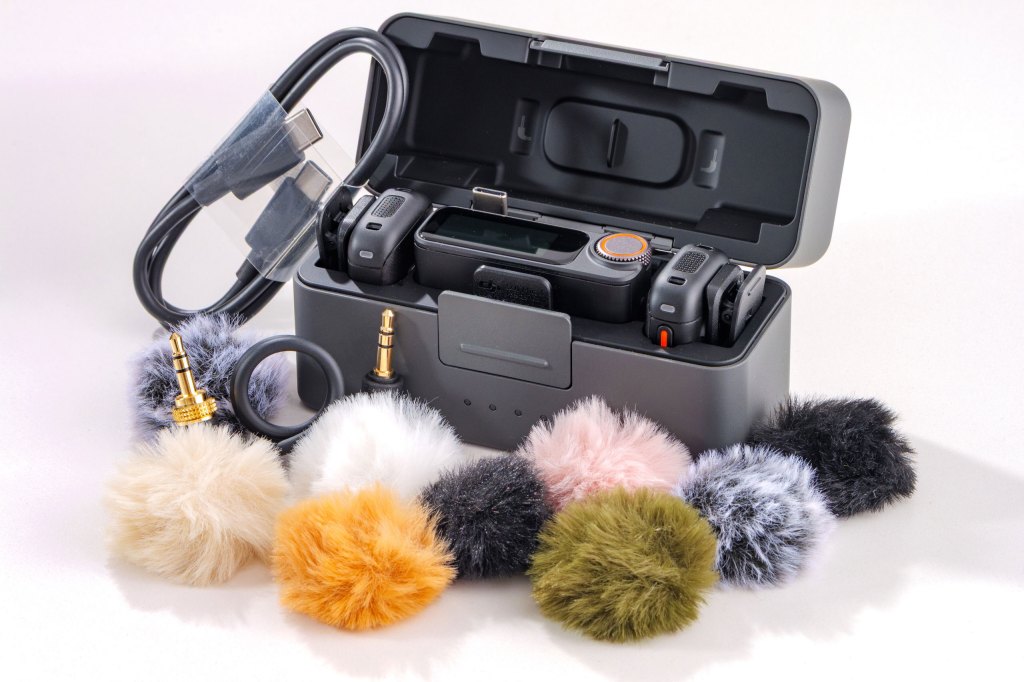Amateur Photographer verdict
The DJI Mic 3 expands on the capabilities of its predecessor with major new features, while providing great audio quality. But some buyers might find the lack of Lavalier support to be a deal-breaker.- Great audio quality
- Very good features to avoid clipping
- Compact kit with everything in it
- Incredibly well featured
- Audio to multiple receivers/cameras
- No Lavalier mic option
- Range limited with moving camera
- TX units hard to conceal
- Takes time to learn menu system
It used to be ground-breaking to include 32-bit Floating Point recording in your mic system, but now everyone is doing it – and some for the second time. Only 18 months after the release of its Mic 2, DJI has introduced an updated, and in some ways fundamentally different, version of its wireless mic set. The DJI Mic 3 brings a new design and a collection of new features that include the ability to send audio to multiple cameras at the same time – but which leaves out one feature that many will feel too important to sacrifice.
DJI Mic 3 at a glance
- $329 / £259 DJI Mic 3 Combi kit (RX + 2TX, charging case and cables)
- $219 / £169 Extra RX and TX kit
- Wireless mic set
- Up to four TX units
- Can transmit audio to eight cameras
- 32-bit float internal recording
- 28 hours of use per charge
- dji.com
At $329 / £259 for the basic kit (2 transmitters and 1 receiver), and $219 / £169 for an additional transmitter/receiver pair, the DJI Mic 3 comes in at a moderately higher price than its predecessor, and sits very much in the top bracket of this style of wireless mic. Let’s see if it’s worth the money.
DJI Mic 3 Major Features
- Distortion avoidance: Adaptive Gain control helps to automatically eliminate peaks for those whose cameras can’t record in 32-bit float
- Transmit and record: Transmitters can record internally while also sending audio to the receiver, and you can chose ‘edited’ or ‘raw’ on each
- Two-level noise cancellation: Pick between Basic and Strong settings according to intensity of background distractions
Features
Like most wireless mic outfits, the DJI Mic 3 base kit comprises a receiver that sits on the camera and a pair of microphone/transmitters that are designed to be attached to the people we are recording. The kit also includes a USB-C or Lightning adapter for the receiver, so it can record directly to a phone/tablet or a computer. This is all packed into a hard case that not only protects the kit but which also charges it from an internal battery.
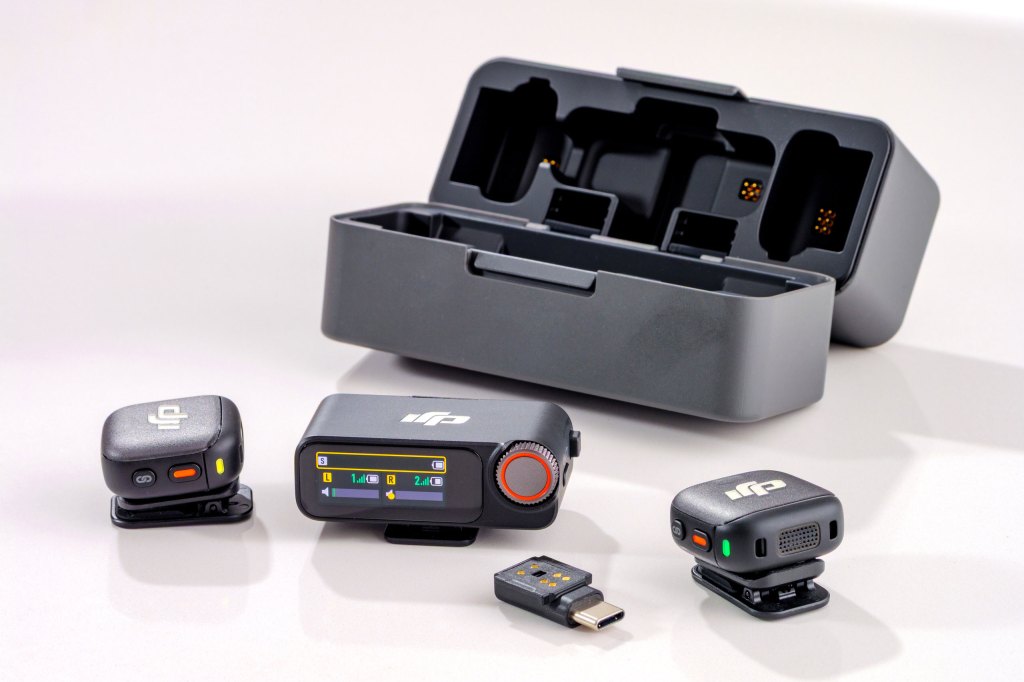
The hard case fits into a soft bag that contains all the cables for charging and connecting, and a pair of wind shields needed for the microphones. If you use a Sony camera that can accept audio through the hotshoe, there is also an optional hotshoe adapter that means you don’t need to cable the receiver to the camera, but which only handles 24-bit recordings.
One of the big attractions of this new wireless mic set is that it allows us to not only record up to four people at the same time – via additional mic/transmitters (TX units) – but we can also send audio to more than one camera at a time. In fact we can send audio from four TX units to eight receivers (RX units), so eight cameras can be recording the same person/people speaking, and they will all receive the same audio from all the active microphones.
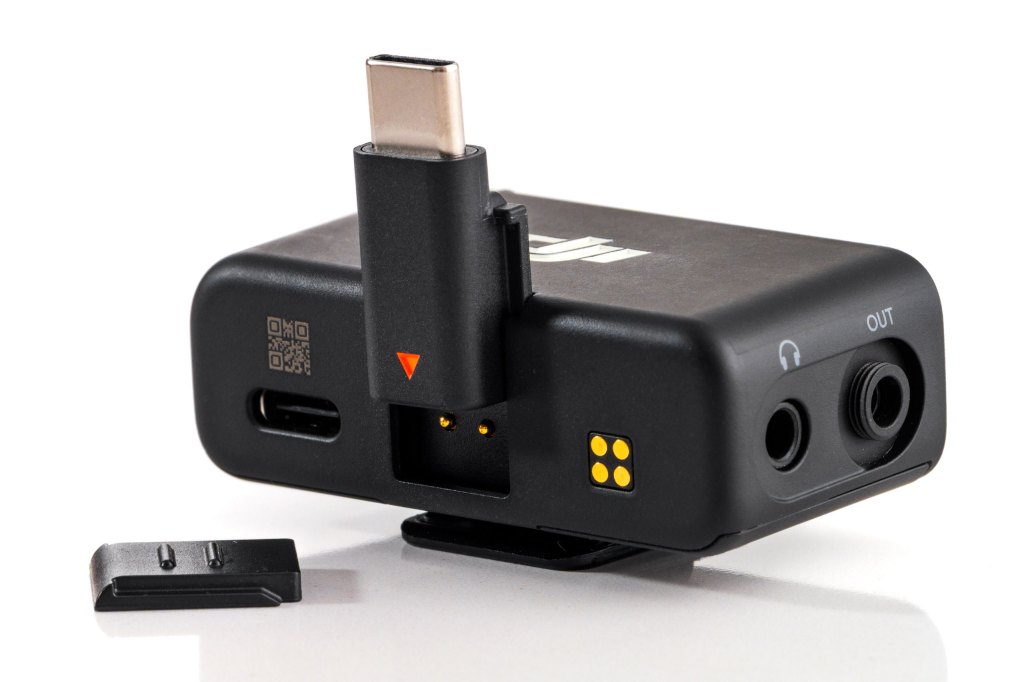
This is quite a step up, and will obviously make it easier to sync audio in multi-cam set-ups – because no syncing will be needed so long as all the video clips are lined up properly. Of course you won’t be needing eight cameras on most shoots, but having two cameras for a single interviewee is very common, and three or four isn’t unreasonable when recording both interviewer and interviewee. It’s a pretty neat feature, especially on an accessible set like this.
Another new feature that aims to make synching audio easier is Time Code. With Time Code active we can send a Time Code signal to the camera and to the mic/transmitters, which is especially useful as each transmitter is capable of internal recording. If Time Code has been recorded it’s much easier to line-up those internal recordings, whether we are recording solely to the receiver or to the camera as well.
One of the nice things about the internal recording is that it can be done using either 24-bit or 32-bit Float, so you don’t have to use a camera capable of recording in 32-bit. Most cameras will record only up to 24-bit, so will miss out on the full potential of the DJI Mic 3’s abilities – but internal recording to the transmitter unit gets around that problem. We have 32GB of internal memory in each transmitter too, so there is plenty of space.
Other new features include three Voice Tone Presets to complement different pitched speakers, two strengths of noise cancellation, and Adaptive Gain Control which mixes recording from two levels to prevent clipping, and which can also automatically adjust levels when two people are using the same mic – so they come out at the same volume.
A Bluetooth feature in each transmitter also means we can connect them directly to a phone for recording, without needing a receiver at all. DJI includes a set of clip-on windshields, and you can also buy additional ones in a variety of colours, so you can match them to your subject’s clothing.
Design and handling
It’s great that we get all this in such a small and convenient package, and that the kit looks nice to go with it. I’m not a fan of seeing microphones in recordings though, and these little transmitters are quite hard to hide. The company has made sure the logos are prominent, even on the magnets used when you hide the transmitter under your clothes. While the TX units weigh only 16g all the weight is concentrated in a small, thick area, so the transmitter pulls collars, bulges under t-shirts and makes itself difficult to conceal.
A key issue here is that there is no option to connect a Lavalier microphone to these transmitters, so the TX units are likely to be in-shot. The earlier DJI Mic 2 does have Lav mic options, but I’m told that was left off this model to keep the TX units as small as possible. While some love to show off what mic they are using, for many others who prefer to record with no distractions, this will be a complete turn off.
DJI has given us a headphone socket on the RX unit so we can monitor audio even when recording internally and not to a camera, as well as a USB-C port so we can power the device from an external battery pack should be need to.
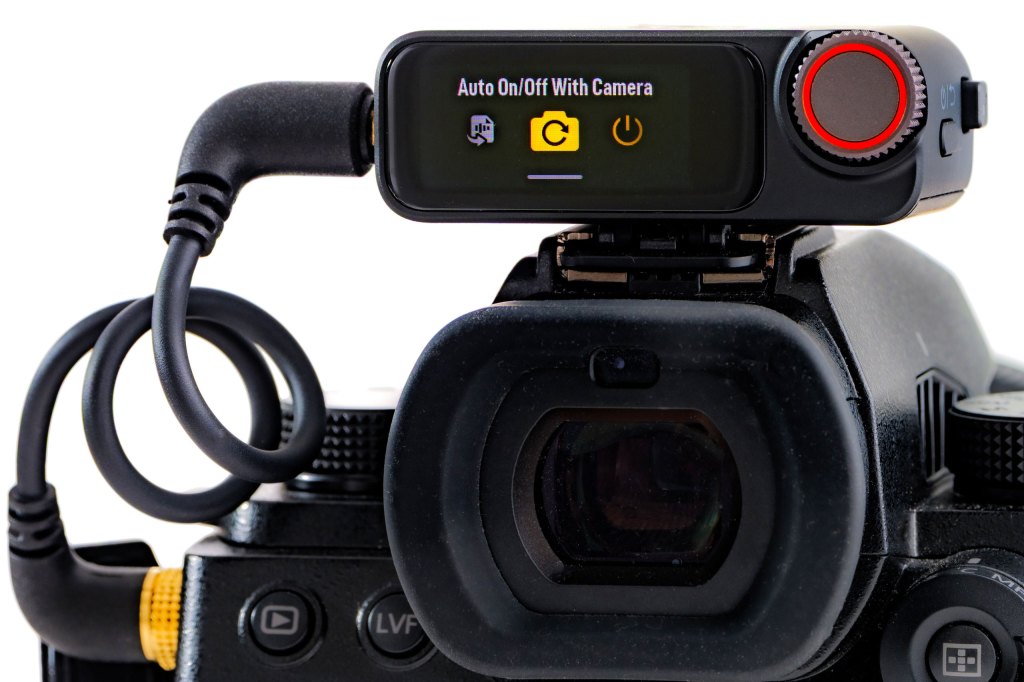
The menus and settings for the whole kit are directed from the rear screen of the receiver unit and navigated by touch, a back button and a scrolling/pressing dial. Navigation of the system is greatly assisted by experience of previous models, or a good long sit down with the manual.
I made the mistake of thinking I could pick it up and work it out, which proved a frustrating strategy. Lots of practice and regular use will be the answer to finding your way around the very many options via such a small screen. Running eight receivers and four transmitters from it though will be like playing a xylophone through a letterbox.
In use and audio quality
Straight out of the box, and even without going into the menu system, you will get very good audio quality from this kit. Wade into the menu and your life will become more complicated, but time and patience will be rewarded with access to the DJI Mic 3’s new features. The difference between the voice tones is subtle but effective, and I found the new Adaptive Gain Control pretty good at controlling moderate peaks that would otherwise have been distorted – it isn’t a magic wand, but it really does help.
The new two-level noise cancelling is also worth investigating. I found the Basic setting good for removing less intrusive sounds and for moderating louder ones, while the Strong setting can eliminate a lot of louder background noise but inevitably at the expense of resolution in the speaker’s voice. In extreme conditions the strong setting will help bury the background to make the voice stand out more, it’s just a question of how much voice distortion you are prepared to put up with. It’s pretty good though.
The range is listed as 400m, so I was surprised to find the signal unreliable after just 20m with a moving camera and a static subject, and with a body in the way after only 10m. With the camera still and the subject moving range is a great deal better, but with a body in the way we can be interrupted at 20m. It can pass through interior walls okay, but not with distance as well. DJI engineers acknowledged my findings and tell me they are working to solve the issue.
Battery life though is much more impressive, with 8 hours for the transmitters and 10 hours for the receiver – and we can recharge 2.4x in the case. The case takes just 2 hours to charge, and a five minute charge of TX or RX units gets you an extra 2 hours of use.
DJI Mic 3: Our Verdict
This is a great mic set, but there are a few caveats. No Lav mic option will be difficult to swallow for some, especially as the TX units drag clothes down with their concentrated weight, and because they are hard to conceal. The lack of range won’t be an issue for those using them indoors in a room and in normal interview situations, but might be for outdoor shoots where the subject needs to be some distance from the camera.
It is also complicated to get the best from the mics by going through the menu system. This is a very fully-featured system, and DJI has packed an enormous number of extremely useful options into it, but it’s no quick job learning how to control everything. It’s worth the effort, but expect it to take some time if you are starting from scratch.
Great audio quality though, and a whole pile of excellent options.

Follow AP on Facebook, Instagram, YouTube and TikTok.

